
|
|
|
GLASGOW CHESS VENUES
Much has been written about where chess was played in some of the major cities of the world, such as London, Amsterdam, Paris, Berlin, Vienna, and New York. At some time or another, chess enthusiasts are likely to have come across references to particularly significant places, such as London's Simpson's- in-the-Strand, the Café de la Régence in Paris, and Cafés König and Kerkau in Berlin.
The chess players of Vienna and Berlin were particularly blessed, the large number of coffee houses in these cities providing comfortable premises for the major chess clubs of a bygone age.
In Glasgow, many chess clubs in the early days met in hotels, restaurants and institutions such as the Athenaeum and Working Men's Clubs. And while there were coffee houses in Glasgow, it was the dramatic growth of tea rooms in the city that opened up more opportunities for Glasgow's chess clubs.
THE EARLY DAYS
Up to 1908 it had been thought that Glasgow Chess Club was constituted in 1840, but the following notice gifted to the club by Mr Robert Pirrie, Hon. President 1895-1913, indicates that a club was actually in existence in the city in 1827, although there is no documentation to prove that its formal title was 'Glasgow Chess Club.' The Notice reads:
Glasgow, 7th. Nov. 1827
The Chess Club will meet in the Royal Hotel Georges Square
on Monday
first the 12th. curt., at 7 o'clock Evening and on
every following
Monday during the season.
Such of the members as wish it may have Tea
or Coffee
till Eight o'clock from the funds of the Club.
Jno. Ross,
Secretary.
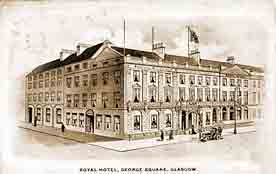
Royal Hotel, George
Square
Picture: Old Glasgow Pubs
Glasgow CC moved many times during their existence. In 1838 they were at the Star Hotel, also in George Square; in 1840 they moved to the Assembly Rooms in Ingram Street; in 1841 they were at the Wellington Arcade, off Sauchiehall Street; in 1847 they returned to the Assembly Rooms, now known as the Athenaeum, and by 1851 they were at 5 Royal Exchange Buildings, off Buchanan Street.
Continuing problems over satisfactory premises, as well as membership difficulties, mean that by 1856 the club was meeting in the dental surgery of their secretary, James Horne, at 150 West Regent Street, and by 1861 they were meeting at Mr Horne's home at 121 Douglas Street.
Things got so bad that the club had to be 'revived' with the institution of a 'New Club' in 1862, at which time space was secured at the Scottish Exhibition Rooms, 93 Bath Street.
The club was still unsettled, with further moves to 138 Bath Street, where they tried four different rooms, 7 Royal Bank Place, and 42 Bath Street. In 1878 they returned to the Athenaeum in Ingram Street, but a few years later they moved again, to Lang's Restaurant, 73 Queen Street. Soon, though they would have stability.
ATHENAEUM ─ INGRAM STREET
The Athenaeum, an educational institution, was opened in October 1847, in the building previously known as the Assembly Rooms, in Ingram Street, Glasgow. It contained dining, reading and class rooms, as well as an extensive library. Space was also available for amusements, such as chess and draughts. Subscription fees had to be paid to obtain membership and the full use of the facilities.
The venue was used for special chess events, an example being the display by Harrwitz, who visited Glasgow in 1848. Chess players at the Athenaeum would occasionally reach out to other clubs to play friendly matches.
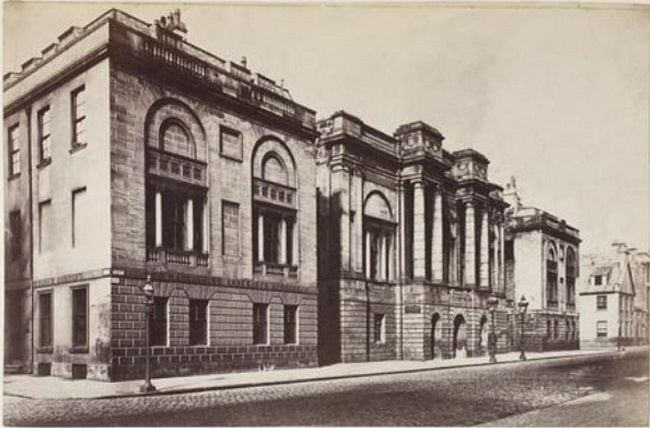
Assembly Rooms (Old Athemaeum), Ingram Street
Picture: Canmore

New Athenaeum, St George's Place, c.1900
Picture:
The Glasgow Athenaeum: A Sketch of Fifty Years' Work
In 1888 the Athenaeum relocated to a new building in St George's Place (now Nelson Mandela Place).
Glasgow CC, which had been meeting in Lang's Restaurant, Queen Street, immediately moved to these new premises and remained there comfortably until 1942, when the requirements of war obliged them to move.
In 1900 it was reported that a new club had been formed at the Athenaeum, so for some time there were two separate chess clubs using this fine location. The Athenaeum Chess Club─many of whose members were also associated with other Glasgow clubs─competed successfully in various competitions.
Smaller premises began to look appealing to chess clubs in the early
1900s. An early example was provided when a new club emerged in Dennistoun
in 1902; it chose to meet at Morton's Tea Rooms, Whitevale Street. Other
clubs would soon follow suit.
CENTRAL WORKING MEN'S CLUB and INSTITUTE
This was opened in February 1865 at 153 Trongate. In 1866 it moved to the Campbell Arcade, 74 Trongate; in April 1870 it moved to 68 Trongate; and in December 1876 a new building specially constructed for the club was formally opened at 34 Trongate. The premises included a reading room and space for indoor games. Draughts had a major following within the club, but chess began to take a hold in the early 1870s. The Central CC had a distinguished history, and was strong enough to challenge the Glasgow and Edinburgh clubs.

34 Trongate
The sign to the right says:
Town Hall Working Men's Club
Picture: The Centre for
Scottish Culture (University of Dundee)
In the same year, 1865, the Bridgeton Working Men's Club was opened in Canning Street. It contained a library and a reading room, and space for board games. Naturally, there was a gathering of chess players, and by 1892 it was being reported that the chess club had a membership of 31, with G.E. Barbier being appointed Hon. President.

The first Bridgeton Working Men's Club
Picture: Bridgeton Library
After the Canning Street building was acquired by the North British Railway Co. in 1897, new premises were built in Landressy Street and opened in 1899.
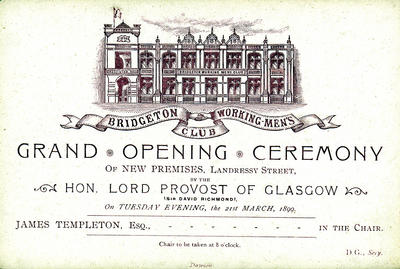
The second Bridgeton Working Men's Club
Picture: Bridgeton Library
The Bridgeton Working Men's Club later participated in Glasgow League competition, winning the Division 2 championship in 1932-33, 1934-35 and 1950-51. The 1939 Scottish champion, Max Pavey, played for the club in league matches.
At the time of their 1903 Spens Cup win, Queen's Park CC were using Turner's Tea Rooms and Restaurant at 441 Victoria Road, Crosshill.
ARLINGTON BATHS
The Arlington Baths Club, in Arlington Street, off Woodlands Road, which had been formed in 1870, still exists today. In 1880, some of their members formed a chess group and participated in friendly matches against other clubs. It appears that interest waned, but was revived around the time that the Glasgow Chess League was formed in 1908. Many of its members were also members of other Glasgow clubs.
More information about the club can be found here.

Arlington Baths
Picture: Arlington Baths website
Interestingly, members of Pollokshields Baths, officially opened in Leslie Street in 1885, also constituted a chess club, in 1886. The president was Peter Fyfe.
Another grand building was used as a chess venue when the Polytechnic club was founded in 1919.
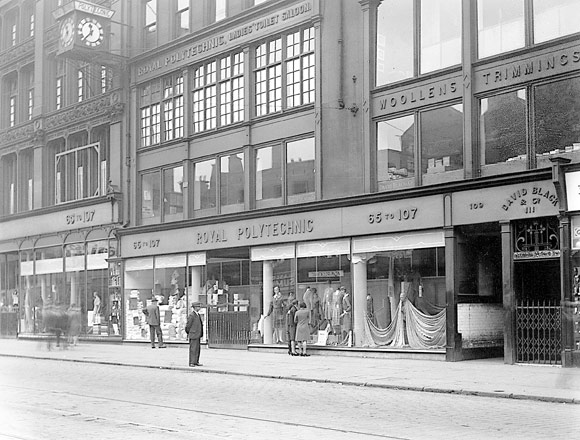
Anderson's Royal Polytechnic, Argyle Street
Picture: Glasgow City Heritage Trust
The Jewish Chess Club was formed in 1926, and when the new Glasgow Jewish Institute was opened in 1935 the club based itself there.
Glasgow Jewish Institute, South
Portland Street
Picture: Scottish Jewish Archives Centre
This venue hosted visits by several masters, including Alekhine, Keres, Koltanowski and Wade. In July 1939, as a result of a fire on the premises, the original Spens Cup was lost (the Jewish CC had won the trophy in March of that year).
TEA ROOMS ETC.
An early reference suggesting that chess enthusiasts sometimes met in smaller establishments was the following:-
Glasgow Post Office Directory 1853─54
Newspaper reports show that Miss M'Callum operated the business at 26 Glassford Street and hosted meetings of a variety of local groups and organisations. Such places were strongly associated with the Temperance movement, which partially explains the success of tea rooms, which also acted as an alternative to the evil alcohol.
Stuart Cranston (1848─1921), the older brother of the better-known Kate Cranston, is credited with starting the trend of Glasgow tea rooms. As a tea dealer, he opened retail premises in 1871 at 2 Queen Street, where patrons were able to sample teas before making a purchase. In 1875 he added tables and chairs for sixteen customers and offered bread and cakes as well. His business became so successful that he later had several premises across the city centre, at least two of which were used by Polytechnic CC.

Cranston's, 28 Buchanan Street
At the start of season 1934─35, Polytechnic CC met here in the afternoons.
Picture: Virtual Mitchell

Cranston's 13─17 Renfield Street
For season 1944─45, Polytechnic CC met in the
afternoons at 17 Renfield Street.
Picture:
Tea and Taste
BURNS CHESS CLUB
This club was formed by patrons of the Burns Tea Rooms at 245 Ingram Street. The tea rooms were run by the 'Misses Burns', and had been operating since the beginning of 1889.
Glasgow Herald, 1 January 1889
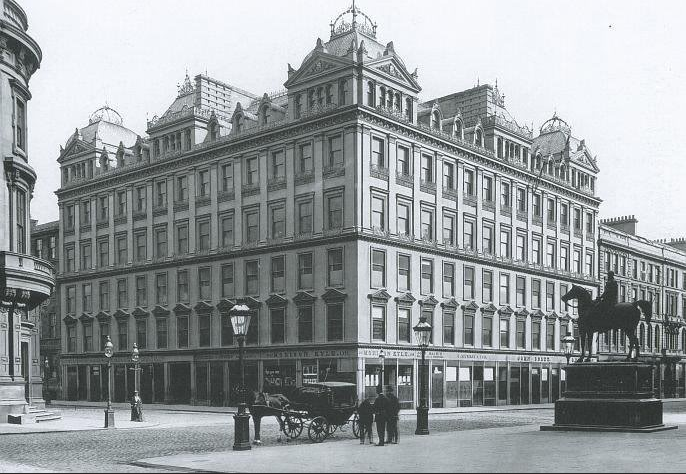
Ingram Street─Queen Street
The club ─ initially informal in nature ─ was
organised around 1893. At this time, before the formation of the Glasgow
Chess League, clubs organised their own in-house tournaments or reached
out to other clubs for friendly matches. The club, which was formally
constituted in 1897, remained at the Burns Tea Rooms until obliged to move
in 1920, when they relocated to Lang's Restaurant, 73 Queen Street, at one
point a home to Glasgow CC. More about Burns CC is
here.
QUEEN'S PARK CHESS CLUB
This club was founded in 1873. Over the years, the club met in a number of premises in the Crosshill area, including Mr Watson's Academy in Douglas Place; the Queen's Park Bowling Club; the Unionist Association at 370 Langside Road, and the YMCA at Eglinton Toll. They also spent many years at Turner's Tea Rooms, 441 Victoria Road ─ this was their clubroom at the time of their 1903 Spens Cup win.
The club faded around the time of WWII, but has been revived. More about the club can be read here, or at their own website.

Turner's Tea Rooms, 441 Victoria Road
Picture: Tea
and Taste
CENTRAL CHESS CLUB
The members of this club had come from the Working's Men's Institute in the Trongate, but this closed in February 1891. Some of the players soon constituted the second version of the Central Chess Club and agreed to meet at Murdoch's Restaurant, 269 Argyle Street. The club looked at other premises and for a short time they were at the Christian Institute in Bothwell Street (more about this later).
By December 1894 the club had moved to Hamilton's Restaurant, 259 Argyle Street, but clearly there were problems for by 1898 it was being described as defunct.
Some of the players then formed the Cabin Chess Club, taking their name from the Cabin Tea Rooms, but in 1903 the club decided to change their name to the Central CC, the third version of this club.
The club met at the Regent Tea Rooms, 51 West Regent Street ─ also briefly used by the Glasgow Ladies Chess Club ─ but in 1912 they moved to Miss Buick's Tea Rooms at 147 West George Street, and were soon followed there by the Glasgow Ladies' CC.
|
|
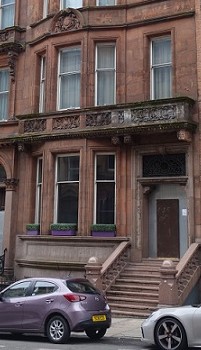 |
|
This advertisement also mentions the Renfield Street
premises, which were opened after WWI. Picture: Tea and Taste |
147 West
George Street The main floor bay-windowed room was likely part of the tea rooms. Picture: Ian Marks |
In 1919 Capablanca was engaged by Glasgow CC for a short visit to the city. He gave a simultaneous display at Miss Buick's in West George Street on 24 September, scoring +35, =2. More can be read here.
In 1916 Margaret Buick (1880─1953) married William Gibson (1873─1932),
who would go on to be a nine-time winner of the Scottish championship. Mr
Gibson was a member of the Central CC (as well as Glasgow CC). Margaret's
business enterprises continued to be referred to as Miss Buick's.
|
|
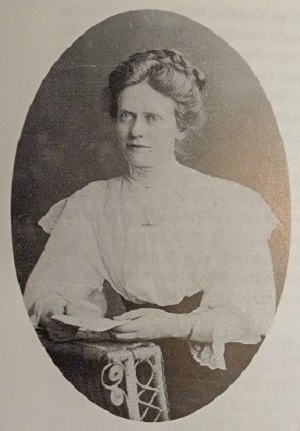 |
| William Gibson Picture: BCM 1932 |
Margaret Buick Picture: Tea and Taste |
In 1923 the Central CC felt obliged to look for other rooms and chose to return to the Regent Restaurant at 51 West Regent Street. That same year, Alekhine gave a 20-board simultaneous display at their 'new' premises.
The period leading up to the start of the Second World War in 1939 was marred by the club having to move several times. Around May 1935 they found space at the Ca'doro in Union Street. A year later, though, at the start of the 1936-37 season, they moved to Reid's Tea Rooms, 34 Gordon Street, but by June 1937 they were in the Oak Tearoom in Bath Street. Another move took place in September 1938, this time to Miss Buick's second tea room at 19a Renfield Street, and in October 1940 they took up residence in Graham's Coffee Rooms, 31 Gordon Street. Club activities continued for a short time before the club was suspended for the remaining years of the war.
|
|
 |
| Ca'doro (1964)
Picture: RIBA |
Reid's, Gordon Street Picture: Tea and Taste |
The Central CC restarted in 1946, using rooms in the Christian Institute on the north side of Bothwell Street. The institute was opened in October 1879, but in 1896 a Bible Training Institute was added to the east and a YMCA to the west, the resulting massive structure occupying the block between West Campbell and Blythswood Streets.
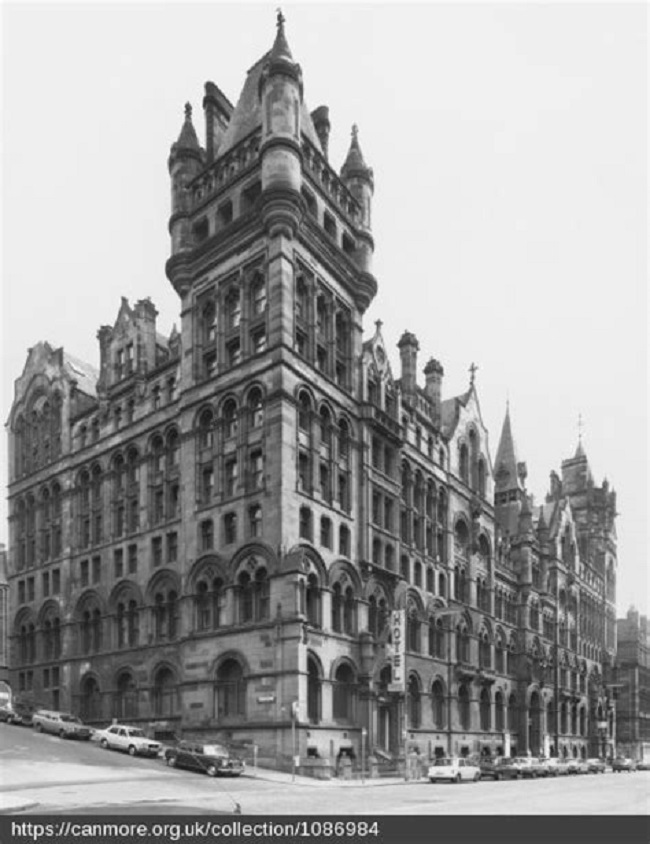
YMCA, Christian Institute, and Bible Training Institute ─ Bothwell Street
Picture: Canmore
The Christian Institute, the home of Bohemian and Polytechnic CCs in the post-WWII years, and the YMCA also hosted a variety of other chess events: the 1946 Scottish Boys' Championship; a series of over-the-board matches between the Glasgow League and members of the British Correspondence Chess Association in the 1950s; Gligoric's 1964 simultaneous exhibition, and junior training sessions in 1969, to give just a few examples.
The Griffin Chess Club, formed in 1945 and for some time after 1950 known as the YMCA-Griffin CC, would also make use of these premises. Some players will recall the regular Griffin Open tournaments in the late 1960s.
John Glendinning, whose father was the Curator at the Christian Institute, lived there until his early 20s. He reached the Polytechnic club by stepping out his apartment and crossing the landing, though he had a longer journey to Griffin CC, which was in the basement.
GLASGOW LADIES' CHESS CLUB
This club was formed in 1905 by several ladies who were members of the Hillhead CC (the first Glasgow club to admit females) In early 1906 they began meeting in the Regent Tea Rooms, 51 West Regent Street, the same venue for the Central CC. In 1906, the ladies hosted the Scottish Women's Championship in their clubrooms.
At the start of the 1906─07 season the club met in Cameron's Tea Rooms, 122 St Vincent Street, used for some time by the Bohemian CC, but by late 1907 the ladies had moved to the Kettledrum Tea Rooms, 106 West George Street, formerly Flint's.
In 1912 the Glasgow Ladies' CC moved to Miss Buick's at 147 West George Street, which were also used by the Central CC.
In 1923 the ladies moved to the Eldon Café, 94 Renfield Street (or El-Don), which was already the home of the Bohemian CC.

El-Don Café, 94 Renfield Street (1936)
The property was awaiting renovations after the cafe's closure
the year before.
Picture: Courtesy of Glasgow City Archives
In 1930 Glasgow Ladies' CC moved to the Athenaeum in St George's Place, where the Glasgow CC was based. In 1940 they moved to Green's Playhouse (later the Apollo Centre), Renfield Street. They were still there in November 1975, when three club members had to be rescued from the Apollo Centre after being trapped by fire and smoke.
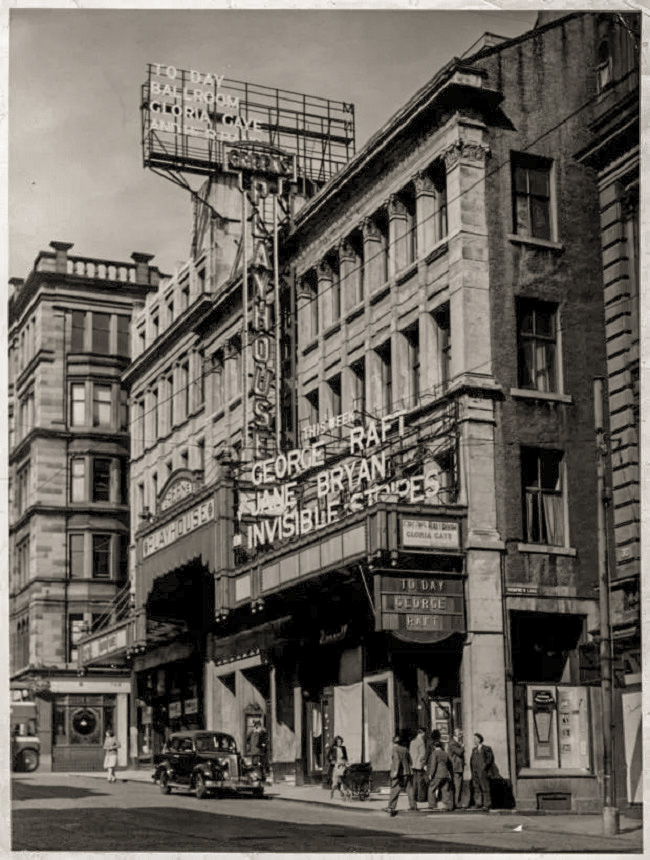
Green's Playhouse, circa 1939
Glasgow
Ladies' CC met in the Geneva Room
In 1981, when the club celebrated its 75th anniversary, the club was at 28 Rose Street, Garnethill, but by 1989 they were without premises and therefore disbanded. For more about the club: Glasgow Ladies CC
BOHEMIAN CHESS CLUB
Formed in 1905, their early meeting place was Flint's Tea Rooms, 106 West George Street. (There were later name changes, first to the Kettledrum, then to Linby.)
After their first year the club had 60 members and by October 1907 the number had risen to 100. At this time, the club met at Cameron's Tea Rooms, 122 St Vincent Street.

Cameron's Tea Rooms, 122 St Vincent Street
Picture: Tea and Taste
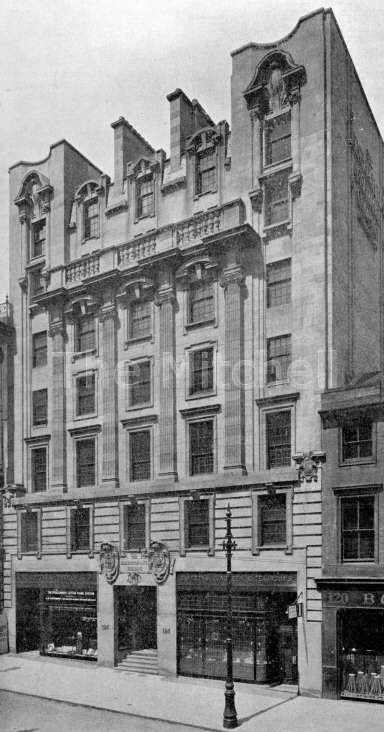
122 St Vincent Street (1906)
Cameron's Tea Rooms were in the premises directly behind the lampost.
Picture: Virtual Mitchell
Soon after, however, the Bohemian CC moved to Waddell's Restaurant at 60 Union Street, sometimes referred to as the City and Commercial Restaurant and Coffee Saloon. They remained there until 1913, when they returned to 106 West George Street, by now renamed the Linby.
At the start of the 1914/15 season the Bohemian CC was at the Eldon Cafe, 94 Renfield Street. This would remain their home for the next 20 years, during which time their membership continued to grow ─ in 1921 they reported having 309 members.
As mentioned above, the Glasgow Ladies' CC also used this venue as their clubroom for a period during the 1920s.
In early 1935 the Bohemian CC was obliged to find new premises. They were briefly at the Globe Restaurant, 174 West Nile St, but by May 1935 it was reported that the club would meet daily at the GHQ Tea Rooms, 136 St Vincent Street.
The outbreak of WWII in September 1939 obliged the club to consider another move. Blackout conditions and transport issues would have caused difficulties for evening play. Also, the club's committee were not entirely happy with the GHQ, and by May 1940 they had moved to the King's Cinema Cafe at Charing Cross. However, the club soon suspended activities for the war years.
The club was reorganised in September 1945. Initially they were in the Trades House Restaurant in Glassford Street, but within a few months they had moved to the YMCA, part of the Christian Institute, Bothwell Street.
More information about the Bohemian CC can be found here. Also, P.B. Anderson wrote about the club here.
Interestingly, although Bohemian CC chose to suspend operations during the war, two new clubs appeared during these years. The Virginians emerged in 1941, formed by patrons of the restaurant within Trades House in Glassford Street (which hosted the 2012 Scottish Congress), and Shettleston was instituted towards the end of 1944, meeting in the Miners' Welfare Rooms, Amulree Street.
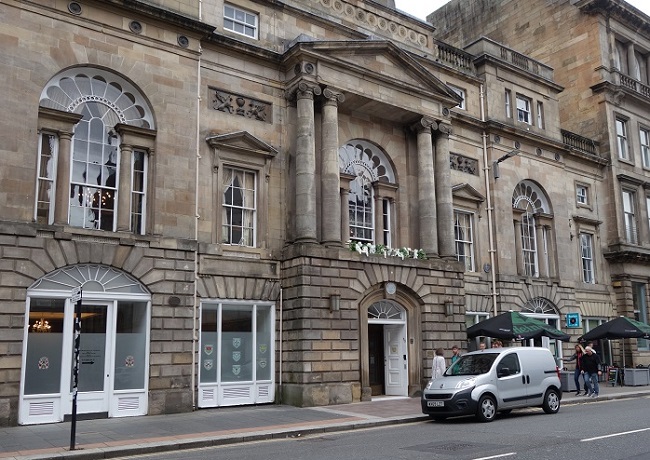
Trades House, Glassford Street (2012)
Picture: Ian Marks
GLASGOW CHESS CLUB
The oldest club in the city had been comfortably housed in the Athenaeum in St George's Place (now Nelson Mandela Place) from 1888─1942, when they were obliged to move because of war requirements. Unbeknownst to members at the time, however, the club would never experience that level of security again.
They found rooms at 12 Renfield Street, which must have suited them well, for they stayed there for five years. The reason for leaving is not known, but in 1947 the club moved to Jean's Tea Rooms, 303 Sauchiehall Street, where they opened every afternoon and Wednesday and Saturday evenings.
In 1950 the club moved round the corner to more suitable premises at 189 Pitt Street. Here, they could again display their library and memorabilia.
In 1961, rent increases obliged the club to move again; they had three different venues before returning to Jean's Tea Rooms in 1965.
|
|
.jpg) |
| Opening soon Kirkintilloch Herald 8 March 1933, p5. |
Jean's Tea Rooms (1933) Soon to be opened (first floor) Picture: Virtual Mitchell |
Jean's Tea Rooms closed abruptly at the end of October 1969, not long after Fairhurst had announced the start of the new season at these premises in his Glasgow Herald chess column. It appears Glasgow CC was the last club to use one of the city's famous tea rooms.
POST-WWII REVIVAL
With the end of the war, all competitions soon resumed; annual congresses, Richardson and Spens Cup matches, Glasgow League, as well as the creation of a Glasgow Schools' League.
In the 1950s, Fairhurst arranged for masters to come to Glasgow: Wade in 1953 and 1954; Tolush in 1954; and a highlight visit by Keres in 1955, when he gave simultaneous exhibitions at the Glasgow Jewish Institute in South Portland Street, and Craig's Tea Rooms, 453 Sauchiehall Street.
Fairhurst also organised the first Glasgow International Tournament in 1953, held at 40 John Street.
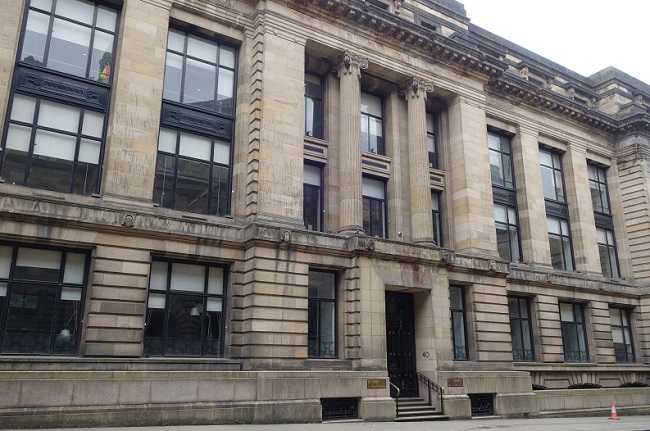
Magistrates Room, 40
John Street
Picture: Ian Marks
The 1960s had further important master visits;
Vasiukov,
Botvinnik, Gligoric,
Stein, Suetin,
and Smyslov.
The Vasiukov simultaneous display was at the Whitehall Restaurant, 51 West Regent Street.

Whitehall Restaurant, 59─61 Renfield
Street
Picture: Virtual Mitchell
In 1936 the Whitehall Restaurant, which also had an entrance in West Regent Lane (visible), expanded to include 51 West Regent Street, which had previously been the Regent Tea Rooms, a home for the Central and Glasgow Ladies' CC.
Botvinnik's 1967 Glasgow display was at the McLellan Galleries (he also gave a display in Bellshill), and Euwe's 1972 simultaneous was also held here.
McLellan Galleries, Sauchiehall Street
Picture: Ian Marks
Several tournament sponsored by the Glasgow Herald were also held here. John Glendinning recalls these events, but states:-
The timing left something to be desired because it quite often coincided with the orange walk going past the front of the building with players advised that they could stop their clocks if desired until the silence returned.
OTHER NOTABLE VENUES
1962 saw the first of an outstanding series of Glasgow Congresses that consistently registered record entry numbers. Several of these events were held at the Police Training College in Oxford Street.
Police Training College, Oxford Street,
Glasgow
Picture: Ian Marks
In 1968 the congress was held for the first
time at Langside Hall, which was thereafter the home of the event for many
years.
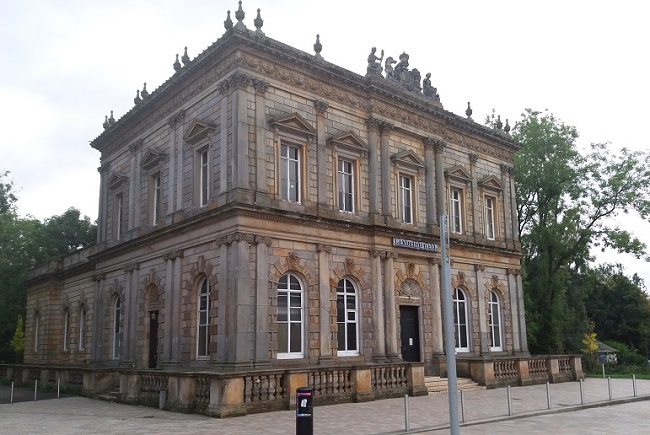
Langside Hall
Picture: Ian
Marks
Another fascinating tournament venue that some players will remember was the Palace of Art in Bellahouston Park, which hosted Easter congresses and Glasgow Herald tournaments.

Palace of Art, Bellahouston Park
Picture: Canmore
The organisers of the Glasgow Congress had the
use of other city-owned buildings. The City Chambers in George Square
hosted the 1984, 1985 and 1987 events, and later congresses were held at
Kelvin Hall.

Kelvin Hall
Picture:
Wikipedia
Two interesting events were held in 1983 at the
rebuilt Stakis Grosvenor Hotel in Glasgow's West End. First was the June
match between Roddy McKay and Tony Miles,
organised by Cathcart Chess Club to celebrate the club's 30th birthday.
A few months later, in October, the hotel and its supportive manager, Tim Kelly, once again agreed to host a chess event, a European Club Cup match between Castlemilk and Partizan Belgrade.
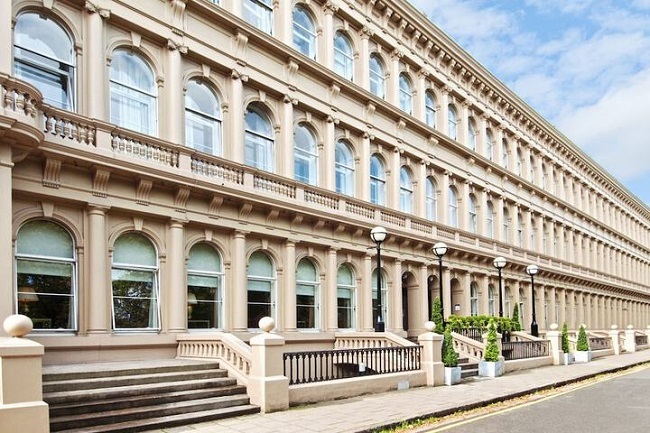
Grosvenor Hotel
While tournament
organisers had a choice of excellent venues, the same cannot be said for
chess clubs; probably every player has experienced venues and playing
conditions that were less than ideal.
As shown above, in earlier years many of the Glasgow chess clubs met in the city centre; Bohemian, Burns, Central, Glasgow, Glasgow Ladies', and Polytechnic. World War II and its aftermath changed everything. Some clubs faded or folded, and others had to restart and rebuild in the post-war years. Of those just mentioned, only Polytechnic has survived.
Even the venerable Glasgow Chess Club, which failed to follow the lead of Edinburgh CC and obtain their own premises, was eventually so affected by a declining membership, rising costs, and problems with venues that they were obliged to suspend operations.
The decline and fall of those city-centre chess clubs was mirrored by the slow decline and disappearance of the tea rooms mentioned above from 1945 through to the mid-1970s.
As time moved on, the importance of chess clubs in the suburbs became even more significant. A glance at the 1987─88 Scottish Chess Association Yearbook shows how things had changed, with Glasgow and district clubs in Bearsden, Bellshill, Cambuslang, Castlemilk, Cathcart, Drumchapel, Giffnock and Clarkston, Jewish, Kirkintilloch, Knightswood, Pollok, and Shettleston, to name just some of them.
Sources
Tea and Taste,
by Perilla Kinchin. White Cockade Publishing, 1991.
Falkirk Herald
chess columns
Glasgow Herald chess columns
John
Glendinning
Alan McGowan
Historian/Archivist, Chess Scotland
added 17/3/2023